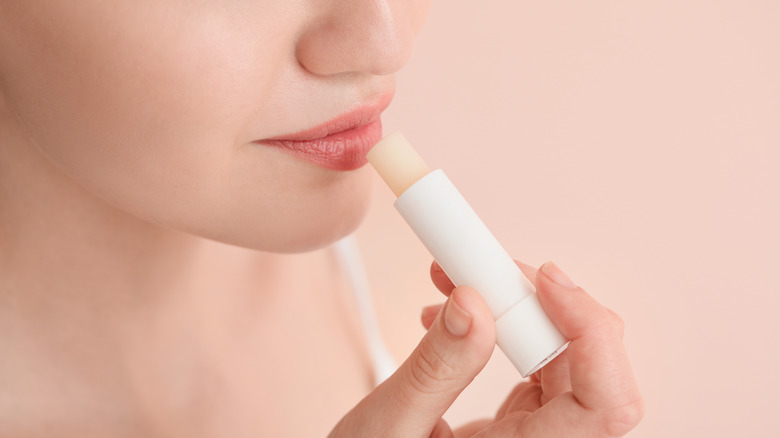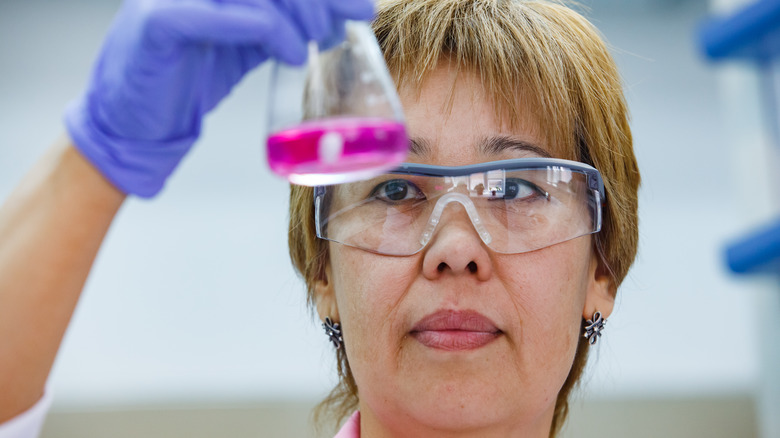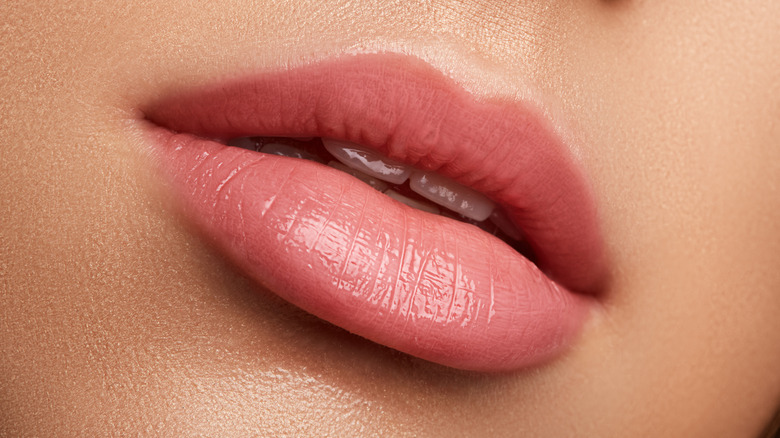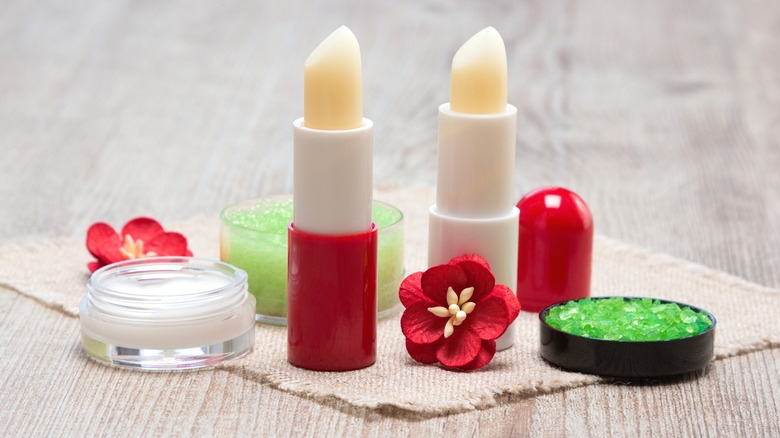Everything You Need To Know About pH-Reacting Makeup
Trying to find the perfect shade of pink lipstick that complements your skin tone is often a lot easier said than done. Some pink lipsticks might be too light and will wash out your skin, while others may be too bright and overtake your makeup look (per Red Apple Lipstick). But there's a specific type of makeup product out there that will enhance the natural rosy tones in your lips — color-changing lipstick.
According to Stylecaster, the color-changing lipstick trend took off back in the 1970s. Avon was one of the major makeup companies at the time to bring out color-changing lipsticks called Color Magic. The lipstick bullets came in neon colors like yellow, green, and blue . . . yet they all appeared pink upon application to the lips. Now the trend has crossed over into blushes as well, with products like Youthforia BYO Blush Oil — a green-tinted blush oil that turns into a sheer, rosy flush on the apples of your cheeks. The magic behind these color-changing products that turn your lips (and cheeks) into the perfect, customized pink tone is all thanks to science.
Color-changing makeup all comes down to chemistry
If you remember high school chemistry class, you might remember using litmus paper to analyze the pH level of various substances (per BBC Science Focus). Similar to how litmus paper changes color depending on the pH level, the dyes used in color-reacting lipsticks also act as an indicator. Basically, the dyes in the products change color as a reaction to your skin's pH (via makeup.com by L'Oreal).
Cosmetic chemist Ni'Kita Wilson told Allure that the primary magical dye used in color-changing products is none other than Red 27. "Red 27 is pH-driven. When it comes in contact with moisture, the change in solubility and pH causes the dye to turn bright pink," Wilson explained. According to BBC Science Focus, the dyes used in the products are weak acids that appear colorless. Since the pH levels of the lips will be higher (less acidic) than the lipstick, a chemical reaction occurs which turns the clear, weak acid into a bright-colored product.
Wilson added that the Red 27 dye remains colorless when it remains unexposed to water. Therefore, the dye can be mixed into an emollient makeup product based on oil or wax — like a lipstick — and remain clear. Per makeup.com, the clear, pH-reacting substance can also be mixed in with another color. That's how the color-changing lipsticks of the 1980s came in vibrant neon colors that all turned pink on the lips.
Factors that can affect the color-changing process
BBC Science Focus reports that the lipstick's color varies from person to person, depending on their lips' pH level. The pH level can be naturally influenced by hormone and exercise levels. Kat and Hailey of Beauty News tested pH-reacting lipsticks on their skin — demonstrating a control swatch on bare skin and swatches over parts of their skin that had dried lemon juice and soap water previously applied over it.
What they found was intriguing for all the makeup nerds out there. The pH-reacting lipstick applies typically as a soft pink over bare skin. Over more acidic skin, the lipstick applies virtually clear, while the lipstick appears hot pink over alkaline skin. So if you're trying to get the ultimate Barbie pink lips, it's probably best to avoid drinking lemonade. Of course, we don't recommend putting soap water on your lips either (for obvious reasons).
While you may be able to manipulate the tone of pink slightly, most people will come out with the same shade of pink, as our lips tend to have a pH of five. If you're wondering how the lipstick can still change to pink when your lips are naturally slightly acidic, there's a simple explanation. L'Oreal's Associate Principal Chemist Roselin Rosario told makeup.com, "Although the pH of the surface of the skin is about five, once the lipstick is applied on the skin, it will interact with the basic pH components of your cells and moisture."
There are limitations to pH-reacting makeup
Moisture is the main factor behind the color-change reaction, rather than the pH level. Remember, that the dyes stay colorless until they are in contact with moisture. In addition, the more Red 27 pigment a product contains, the brighter the end result will be (via Allure).
All of this is taken into consideration when makeup companies are formulating pH-reacting makeup products. Roselin Rosario told makeup.com, "In formula development, the performance of these products is tested by adding an acidic or basic solution to the product to observe how the color changes. And they also are tested on skin to see the intensity of the colors."
Color-reacting products are also rigorously tested for safety — so you can safely turn your lips into a rosy hue without having to worry about ingredients. But if you're wondering why there hasn't been color-changing eyeliner yet, Rosario told makeup.com, "The options for color-changing makeup are limited because materials mainly change from colorless to shades of pink — which is why you often see it in just lipsticks." Now that you know the interesting science behind the products, you may just have a deep appreciation of their ability to enhance your natural beauty.



